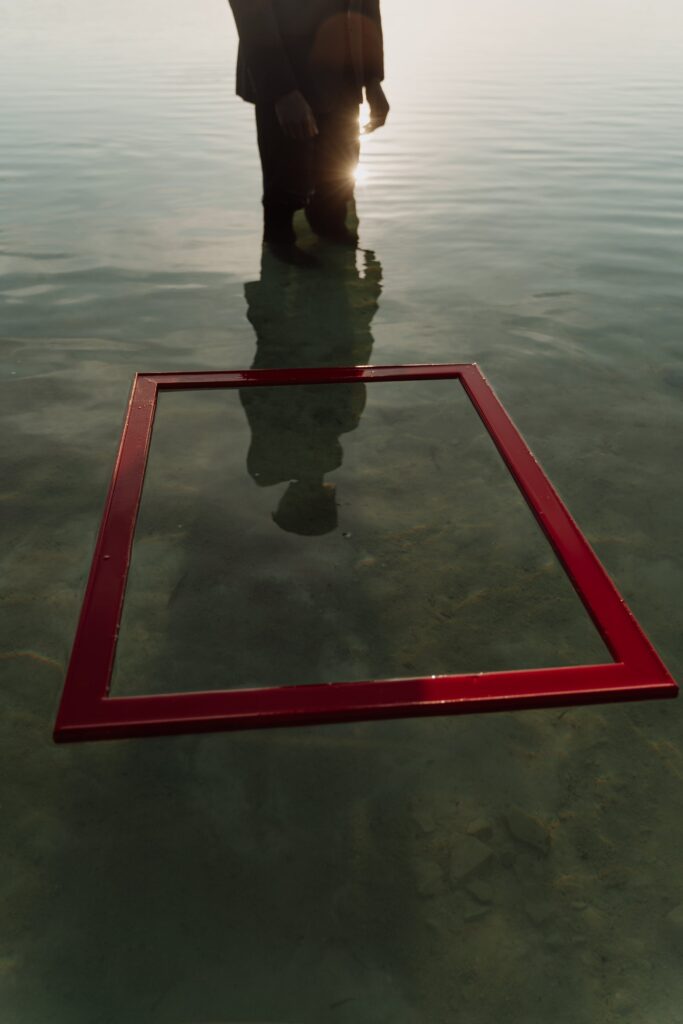In this ultimate guide, you will discover everything you need to know about the fascinating world of mechanical artwork. From intricate timepieces to mesmerizing automations, this article will explore the intricate craftsmanship and breathtaking creations that make mechanical artwork a true marvel. Whether you’re a seasoned collector or a curious enthusiast, get ready to embark on a captivating journey through the captivating realm of mechanical art.

1. What is Mechanical Artwork?
1.1 Definition of Mechanical Artwork
Mechanical artwork refers to a form of artistic expression that incorporates moving parts, mechanisms, and technology to create visually captivating and interactive pieces. Unlike traditional static artworks, mechanical artwork comes to life through the integration of gears, motors, and control systems. These dynamic sculptures and installations engage viewers through their mesmerizing movements and thoughtful design. In essence, mechanical artwork combines the principles of engineering and aesthetics to blur the boundaries between art and technology.
1.2 Historical Background
The roots of mechanical artwork can be traced back to ancient civilizations, where automata and mechanical devices were crafted as symbols of power and craftsmanship. However, it was during the Renaissance period that mechanical art truly flourished, as artists began to explore and experiment with the possibilities of incorporating movement into their works. Artists such as Leonardo da Vinci and Albrecht Dürer created intricate mechanical drawings and designs that laid the foundation for mechanical art as we know it today.
2. Types of Mechanical Artwork
2.1 Kinetic Sculptures
Kinetic sculptures are one of the most popular forms of mechanical artwork. These sculptures are designed to move and change over time, captivating viewers with their dynamic and ever-changing displays. Kinetic sculptures often utilize various types of movements, including rotary, oscillating, and reciprocating motions, to create visually stunning effects. Artists often employ a combination of materials such as metal, wood, and electronics to bring their kinetic sculptures to life.
2.2 Automata
Automata are mechanical devices that mimic human or animal motions. These intricate machines are often designed with gears, levers, and cams to simulate lifelike movements. Automata have a long history and were widely popular during the 18th and 19th centuries. Today, automata continue to captivate audiences with their whimsical and enchanting displays. From intricate hand-cranked mechanisms to sophisticated robotic automata, these mechanical wonders never fail to evoke a sense of wonder and awe.
2.3 Mobiles
Mobiles, popularized by artist Alexander Calder, are suspended sculptures that move freely in the air. These delicate and balanced artworks often consist of geometric shapes or objects suspended from a central pivot point. Mobiles are designed to respond to air currents or gentle touches, creating graceful and ever-changing movements. Inspired by nature and the principles of balance, mobiles bring a sense of tranquility and harmony to any space they inhabit.
2.4 Clockwork Art
Clockwork art, also known as horological art, integrates timekeeping mechanisms into artistic creations. From intricate automaton clocks to elaborate kinetic sculptures with clockwork components, clockwork art combines the technical precision of clockmaking with artistic expression. These highly detailed and often ornate pieces serve both a functional purpose as timekeepers and as captivating works of art.
2.5 Steampunk Art
Steampunk art is a subgenre of mechanical artwork that draws inspiration from the Victorian era and the industrial revolution. Characterized by its fusion of steam-powered machinery, Victorian aesthetics, and elements of science fiction, steampunk art creates a unique blend of nostalgia and futuristic imagination. Artists often repurpose and incorporate found objects, vintage components, and industrial materials to create one-of-a-kind steampunk creations.
3. Artists and Masterpieces
3.1 Jean Tinguely and ‘Homage to New York’
Jean Tinguely, a Swiss artist, is renowned for his kinetic sculptures that are infused with a sense of whimsy and playfulness. One of his most iconic works is ‘Homage to New York,’ created in 1960. This ambitious piece was a self-destructing machine built as a performance art installation. It consisted of various mechanical parts, wheels, and motors, which ultimately led to its demise in a loud and explosive finale. Tinguely’s piece challenged traditional notions of art and questioned the impermanence of artistic creations.
3.2 Arthur Ganson and ‘Machine with Concrete Thoughts’
Arthur Ganson, an American artist, is known for his thought-provoking kinetic sculptures. ‘Machine with Concrete Thoughts,’ created in 2008, is a mesmerizing artwork that features a series of gears and mechanical components. The piece symbolizes the complexity of the human mind and our never-ending stream of thoughts. Utilizing intricate mechanisms, Ganson’s sculpture presents an artistic representation of the invisible workings of our inner thoughts.
3.3 Tim Lewis and ‘Ponytron’
Tim Lewis, a British artist, specializes in creating whimsical and surreal mechanical sculptures. ‘Ponytron,’ created in 2010, is a delightful artwork that combines the elegance of a carousel horse with the complexities of machinery. The sculpture is brought to life through a series of intricate levers and pulleys, animating the horse’s movements. Lewis’s creations often blur the line between reality and fantasy, inviting viewers to engage with their imagination.
3.4 Chico MacMurtrie and ‘Park Avenue Portal’
Chico MacMurtrie, an American artist, explores the intersection of technology, nature, and the human body through his mechanical art installations. ‘Park Avenue Portal,’ created in 2002, is a monumental sculpture that consists of massive robotic arms suspended above a busy street. The arms, controlled by a network of sensors and motors, move in synchrony, creating a dynamic and interactive experience. MacMurtrie’s installations provoke reflection on the relationship between humanity and technology.
3.5 Chris Burden and ‘Metropolis II’
Chris Burden, an American artist, is known for his large-scale installations that explore themes of transportation and urban life. ‘Metropolis II,’ created in 2011, is an intricately designed artwork featuring a miniature city with an elaborate system of tracks and over 1,000 toy cars. The cars whiz through the city at high speeds, symbolizing the frenetic energy of urban environments. Burden’s artwork captures the essence of modern-day society and invites contemplation on the nature of urban living.
4. How Mechanical Artwork Works
4.1 Basic Mechanisms and Principles
At the core of mechanical artwork lie basic mechanisms and principles that enable movement. Gears, pulleys, levers, and cams are commonly used to transmit and convert motion from one form to another. Understanding these fundamental mechanical principles is essential for artists and creators to bring their ideas to life.
4.2 Use of Gears and Motors
Gears and motors play a crucial role in mechanical artwork by providing precise control over movements. Gears transmit rotational motion between various components, while motors provide the power needed to drive the mechanisms. Artists often experiment with different gear ratios and motor types to achieve the desired speed, torque, and smoothness of motion in their artworks.
4.3 Control Systems
Control systems, such as sensors and microcontrollers, are employed to regulate and coordinate the movements of mechanical artworks. Sensors detect various inputs, such as proximity or touch, and trigger specific responses in the artwork. Microcontrollers, like Arduino or Raspberry Pi, enable artists to program complex sequences of movements, adding a layer of interactivity and intelligence to their creations.
4.4 Incorporating Electronics and Programming
Modern mechanical artwork often embraces electronics and programming to enhance its capabilities. Artists integrate electronic components, such as servos, LEDs, and actuators, to add dynamic lighting effects or sound to their creations. Through programming, artists can create intricate sequences of movement, synchronize different mechanical parts, and even incorporate interactive elements, further blurring the line between traditional art and technology.

5. Materials and Techniques
5.1 Metals and Metalworking
Metal is a common material used in mechanical artwork due to its durability, versatility, and ability to withstand movement and forces. Artists skilled in metalworking techniques, such as welding, forging, and machining, can create intricate and structurally sound pieces. From stainless steel and brass to aluminum and copper, different metals offer unique aesthetic qualities that can be harnessed to enhance the visual impact of mechanical artworks.
5.2 Wood and Woodworking
Wood is another popular material choice for mechanical artwork due to its natural warmth and versatility. Artists skilled in woodworking techniques can craft intricate gears, levers, and enclosures, adding an organic touch to their creations. Additionally, wood can be combined with other materials, such as metal or plastic, to create visually striking contrasts and textures in mechanical artworks.
5.3 3D Printing and Rapid Prototyping
Advancements in 3D printing technology have revolutionized the creation process for mechanical artworks. Artists can now design and fabricate complex parts and components with ease using computer-aided design software and 3D printers. Rapid prototyping allows for iterative design changes and quick experimentation, enabling artists to refine their ideas and push the boundaries of what is possible in mechanical art.
5.4 Circuitry and Electronics
Incorporating circuitry and electronics is a crucial aspect of many contemporary mechanical artworks. Artists skilled in electrical engineering and circuit design can integrate sensors, microcontrollers, and other electronic components seamlessly into their creations. The use of LEDs, sound modules, and other electronic devices can add captivating visual and auditory effects, elevating the overall experience of interacting with mechanical artwork.
6. Tools and Equipment
6.1 Traditional Hand Tools
Traditional hand tools, such as pliers, screwdrivers, files, and hammers, are essential for artists working on mechanical artwork. From shaping and forming metal or wood to assembling and adjusting components, these tools enable precise and detailed craftsmanship. It is important for artists to have a well-rounded set of hand tools to effectively bring their mechanical visions to life.
6.2 Power Tools
Power tools, such as drills, saws, and sanders, can greatly expedite the fabrication process for mechanical artworks. These tools help artists with tasks such as cutting precise shapes, drilling holes, and smoothing surfaces. However, it is important to use power tools with caution and follow safety guidelines to prevent accidents and ensure the highest quality of work.
6.3 Electronic Components
For artists incorporating electronics into their mechanical artworks, a range of electronic components is necessary. These may include sensors, microcontrollers, motors, LEDs, resistors, capacitors, and wiring. Familiarity with electronic components and their specifications allows artists to choose the most suitable components for their desired effects and seamlessly integrate them into their artworks.
6.4 Programming Software
Artists delving into the realm of electronic integration and programming will require appropriate software tools. Software platforms such as Arduino and Raspberry Pi offer user-friendly programming environments that allow artists to control and coordinate the movements and interactions of their mechanical artworks. Familiarity with programming concepts and syntax is beneficial in optimizing the functionality and interactivity of the artwork.

7. Design Considerations
7.1 Aesthetics and Style
Aesthetics and style play a crucial role in mechanical artwork, just as they do in traditional art forms. Artists must consider the overall visual impact, color palettes, forms, and proportions of their creations. Whether aiming for a sleek and futuristic look or a weathered and vintage aesthetic, the design choices made contribute to the overall message and resonance of the artwork.
7.2 Balance and Stability
Given the dynamic nature of mechanical artwork, balance and stability are vital considerations. Artists must ensure that their creations are structurally sound and capable of withstanding the forces generated by movement. Proper weight distribution, strategic placement of gears and components, and careful selection of materials all contribute to achieving mechanical stability in artworks.
7.3 Noise and Sound Effects
Sound can be an integral part of mechanical artworks, adding an additional layer of sensory engagement. Artists can utilize various mechanisms, such as striking objects, air-driven whistles, or sound modules, to generate auditory effects. It is essential to consider the intended experience and desired ambiance when incorporating sound into mechanical artworks, as certain noises can either enhance or detract from the overall impact.
7.4 Safety Precautions
Working with moving mechanical parts, electronics, and power tools presents inherent risks. Artists must prioritize safety throughout the creation and exhibition processes. Protective gear, such as safety glasses and gloves, should be worn when working with tools and machinery. Additionally, adequate ventilation and fire safety measures should be in place in any space where mechanical artworks are being developed or displayed.
8. Building Your Own Mechanical Artwork
8.1 Idea Generation and Conceptualization
Building your own mechanical artwork starts with a clear idea and vision. Consider the themes, emotions, or concepts you wish to convey through your creation, and explore various sketches, diagrams, or mood boards to refine your ideas. Experimenting with different materials and mechanisms can help you visualize and develop your concept further.
8.2 Gathering Materials and Resources
Once you have a solid concept, it’s time to gather the necessary materials and resources. Make a list of the components, tools, and materials you will need for your artwork. Research suppliers, local hardware stores, or online retailers to identify where you can source your materials. Be open to exploring alternative materials or repurposing existing objects to add uniqueness to your creation.
8.3 Step-by-Step Assembly Guide
Assembling your mechanical artwork requires careful planning and execution. Start by breaking down your design into manageable steps. Identify the core mechanisms or movements that form the foundation of your artwork, and proceed step-by-step to incorporate additional components and features. Be patient and meticulous, ensuring that each part is securely connected and functions properly.
8.4 Troubleshooting and Maintenance Tips
Even the most well-crafted mechanical artwork may encounter challenges or require maintenance over time. Prepare yourself by familiarizing yourself with basic troubleshooting techniques and common issues that may arise. Develop a maintenance schedule to ensure that your creation continues to function optimally. Regular inspections, lubrication of moving parts, and addressing any mechanical or electrical faults promptly will help prolong the lifespan and enjoyment of your mechanical artwork.
9. Exhibiting and Showcasing Mechanical Artwork
9.1 Choosing the Right Venue or Exhibition
Choosing the right venue or exhibition for showcasing your mechanical artwork is crucial to maximize its impact and reach your target audience. Look for galleries, museums, or art events that align with your artistic vision and the themes explored in your artwork. Consider the space requirements and technical considerations, such as power supply and lighting accommodations, to ensure a seamless exhibition experience.
9.2 Lighting and Display Considerations
Lighting plays a vital role in accentuating the visual impact of mechanical artwork. Consider the color temperature, angle, and intensity of lighting to highlight the artwork’s intricate details and movements. Additionally, think about the overall display arrangement, including pedestals, plinths, or mounting systems, to effectively present your artwork and create a captivating viewing experience.
9.3 Interaction and Engagement with Viewers
Mechanical artwork has the unique ability to engage and captivate viewers through its movement and interactivity. Consider incorporating interactive elements, such as buttons, sensors, or responsive mechanisms, to foster a deeper connection between your artwork and its audience. Encourage viewers to explore and interact with your creation, allowing them to become active participants in the artistic experience.
9.4 Promotion and Marketing
Effectively promoting and marketing your mechanical artwork is key to generating interest, attracting viewers, and creating opportunities for further exposure. Utilize online and social media platforms to showcase your artwork, sharing behind-the-scenes progress updates and stories. Collaborate with art influencers, curators, or local art communities to reach a wider audience and explore potential exhibition opportunities. By sharing your unique artistic journey, you can create intrigue and anticipation around your mechanical artwork.
10. Inspiring Mechanical Artwork Installations
10.1 Philippe Bouveret and ‘The Submariners’
Philippe Bouveret, a French artist, created ‘The Submariners,’ an enchanting mechanical installation that immerses viewers in an underwater world. The installation features a series of articulated sea creatures, driven by a network of mechanical linkages and pistons, creating lifelike movements. ‘The Submariners’ invites viewers to marvel at the delicate beauty of marine life and contemplate the fragility of our underwater ecosystems.
10.2 Leonie Felle and ‘The Dandelion Clock’
Leonie Felle, a German artist, crafted ‘The Dandelion Clock,’ a mesmerizing mechanical sculpture that captures the ethereal qualities of dandelion seeds floating in the wind. The sculpture comprises intricate gears and fans that gently blow puffs of cottony dandelion seeds into the air. ‘The Dandelion Clock’ encapsulates the fleeting nature of life and evokes a sense of wonder and nostalgia.
10.3 Benjamin Gaulon and ‘Corrupt / Disturb’
Benjamin Gaulon, an Irish artist, explores the intersection of technology and societal issues through ‘Corrupt / Disturb.’ This mechanical artwork presents a series of modified typewriters that mechanically tap out distressing news headlines, reflecting the overwhelming exposure to negative news in today’s media-saturated world. Gaulon’s thought-provoking installation encourages viewers to reflect on their relationship with media and the impacts of constant exposure to distressing information.
In conclusion, mechanical artwork is a captivating fusion of aesthetics, engineering, and technology. From kinetic sculptures and automata to clockwork art and steampunk creations, mechanical artwork blurs the boundaries between art and technology. Through the integration of mechanical components, artists bring their creations to life, engaging viewers through movement, interactivity, and thought-provoking designs. By exploring the works of renowned artists, understanding the mechanisms and principles behind mechanical artwork, and acquiring the necessary tools and techniques, anyone can embark on their own journey of creating unique and mesmerizing mechanical artworks. Whether displaying the creations in exhibitions, inspiring engagement through interactivity, or exploring new realms through technology, mechanical artwork continues to push the boundaries of artistic expression and captivate audiences around the world.

